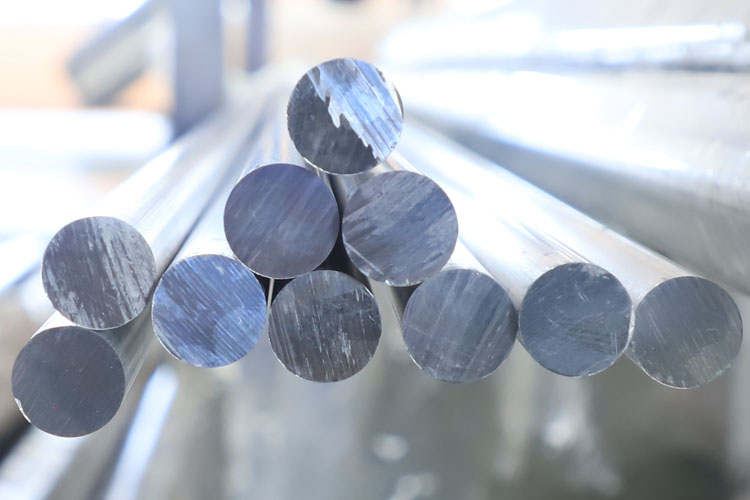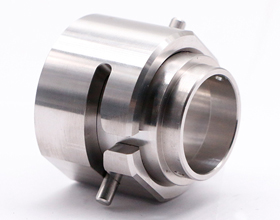Alloy Steel vs Stainless Steel: A Guide to the Differences
In the field of CNC machining services, alloy steel and stainless steel are two important metal materials that are widely used in various precision manufacturing due to their unique physical and mechanical properties. This article aims to compare the differences between alloy steel and stainless steel in CNC machining to help users better choose the material that suits their needs.
What is Alloy Steel?
In CNC machining, alloy steel is often used to manufacture parts that need to withstand high loads and harsh environments, such as automobile transmission shafts, engineering machinery parts, etc. due to its high strength and wear resistance.
Types of Alloy Steel.
According to the content and type of alloy elements, alloy steel can be divided into low alloy steel, medium alloy steel and high alloy steel:
Low-Alloy Steel: Contains a small percentage of alloying elements, typically less than 8%. This type of steel is known for its toughness, cost-effectiveness, and use in applications like pipelines and automotive components.
Medium alloy steel: Contains moderate amounts of alloying elements, usually between 8% and 15%. This type of steel is known for its enhanced strength, hardness and good wear resistance and is widely used in the manufacture of components that require higher strength and durability, such as wind turbine components, building structures and heavy machinery parts.
High-Alloy Steel: Contains a higher percentage of alloying elements, more than 8%. This provides superior hardness, strength, and corrosion resistance, which makes it ideal for heavy-duty machinery and specialized industrial equipment.
What is Stainless Steel?
Stainless steel is a special type of alloy steel that contains at least 10.5% chromium by weight. The chromium content gives stainless steel its unique property of corrosion resistance. When exposed to oxygen, chromium forms a thin layer of chromium oxide on the steel’s surface, In CNC machining, stainless steel is favored for its good cutting performance and surface quality, and is often used to manufacture precision parts and decorative components.

Types of Stainless Steel.
Stainless steel is generally divided into several types based on its crystalline structure:
Austenitic Stainless Steel: The most common type, known for excellent corrosion resistance, formability, and weldability. Common grades include 304 and 316.
Ferritic Stainless Steel: Contains higher chromium levels but little to no nickel, making it less expensive. It has moderate corrosion resistance and is used in automotive parts and kitchen equipment.
Martensitic Stainless Steel: Known for high strength and hardness, martensitic stainless steel is used in applications like cutlery, surgical instruments, and turbine blades.
The Difference Between Alloy Steel and Stainless Steel.
There are significant differences in composition between alloy steel and stainless steel. Alloy steel is mainly composed of iron (Fe) and carbon (C), with a small or appropriate amount of other alloying elements such as chromium (Cr), nickel (Ni), molybdenum (Mo), manganese (Mn), silicon (Si), vanadium (V), titanium (Ti), etc. The addition of these elements is intended to improve the mechanical properties and corrosion resistance of steel, and enhance its strength, hardness, wear resistance and toughness.
Stainless steel is mainly composed of iron (Fe), carbon (C) and chromium (Cr), of which the chromium content is usually not less than 10.5%, which is the key element for forming the corrosion-resistant oxide film of stainless steel. In addition, stainless steel may also contain other alloy elements such as nickel (Ni), molybdenum (Mo), titanium (Ti), nitrogen (N), copper (Cu), etc. to further optimize its performance, such as improving corrosion resistance, strength and hardness.
Mechanical Properties of Alloy Steel and Stainless Steel.
Strength and Hardness: Alloy steel is generally superior to stainless steel in terms of strength and hardness, which makes it excellent in situations where it needs to withstand greater loads and stresses. However, stainless steel also has sufficient strength and hardness to meet the needs of many engineering applications.
Toughness: Both have some toughness, but stainless steel is generally tougher and can maintain structural integrity over a wider range of deformation.
Difference In Corrosion Resistance Between Alloy Steel and Stainless Steel.
Stainless steel is highly corrosion-resistant. Its main components are iron, chromium and nickel, of which the chromium content is usually not less than 10.5%. Chromium is the main alloying element in stainless steel, which helps to form a dense oxide film, thereby significantly improving the corrosion resistance of the steel. This makes it suitable for environments that require exposure to moisture or chemicals, such as marine applications, kitchen appliances and medical devices.

Alloy steel is a type of steel containing alloying elements, such as chromium, nickel, molybdenum, manganese, etc., which can improve the mechanical properties and corrosion resistance of steel. However, although alloy steel has a certain degree of corrosion resistance, its corrosion resistance is usually not as good as that of stainless steel. Alloy steel has high surface hardness, tight structure, and is not easily damaged, but in some corrosive environments, such as humid, acidic or alkaline environments, its surface is easily corroded and rusted. This is mainly because the content and types of alloying elements in alloy steel are relatively small, and it is impossible to form a dense oxide film like stainless steel to protect the steel matrix from corrosion.
In summary, although alloy steel has certain corrosion resistance, stainless steel has superior corrosion resistance in most corrosive environments.
The Influence of the Manufacturing Process on Alloy Steel and Stainless Steel.
Heat treatment process is an indispensable part of metal material machining and has a significant impact on the performance of alloy steel and stainless steel.
Heat Treatment Process Overview
Heat treatment processes mainly include annealing, normalizing, quenching, tempering, surface heat treatment and chemical heat treatment, etc. These processes change the organizational structure of metal materials through heating, insulation and cooling steps to obtain the expected mechanical properties and corrosion resistance.
The influence of heat treatment processes such as annealing, normalizing, quenching and tempering on the properties of alloy steel and stainless steel.
| Heat treatment process | Alloy steel effect | Stainless steel effect |
| annealing | 1. Increase softness and improve processability 2. Eliminate internal stress and prevent deformation or cracking 3. Optimize organizational structure and improve performance consistency and stability 4. Improve ductility and reduce hardness |
1. Increase ductility and reduce hardness 2. Eliminate internal stress and prevent deformation or cracking 3. Optimize organizational structure and improve performance consistency and stability 4. Improve corrosion resistance and optimize chemical composition distribution 5. Improve machinability and reduce the risk of processing cracking |
| Quenching | 1. Significantly increase hardness and strength 2. Reduce plasticity and toughness |
1. The hardness is significantly improved, but the risk of cracking may increase due to material characteristics 2. Special attention should be paid to the changes in brittleness and corrosion resistance after quenching 3. The changes in organizational structure are similar to those of alloy steel. |
| Tempering | 1. Reduce the hardness after quenching and increase ductility 2. Eliminate quenching stress and prevent deformation or cracking 3. Adjust mechanical properties such as hardness, strength, plasticity and toughness 4. Stabilize the organizational structure and maintain dimensional and performance stability 5. Improve processing performance, such as cutting, welding, etc. 6. Some alloy steels may experience secondary hardening and there is a risk of temper brittleness |
1. Balance ductility and hardness, adjust according to tempering temperature and time 2. Has an important impact on corrosion resistance, need to pay attention to the selection of tempering parameters- 3. Improve processing performance, such as cutting, welding, etc. |
| Normalizing | 1. Refine the grain structure and improve mechanical properties (hardness, strength, toughness, etc.) 2. Corrosion resistance is improved, but temperature and time need to be controlled to avoid excessive embrittlement |
1. Homogenize and refine the grain structure and improve mechanical properties 2. The specific effect varies depending on the type and composition of stainless steel, but generally helps improve overall performance |
Cost Difference
Cost of Alloy Steel
Alloy steel is generally more affordable than stainless steel, particularly when considering low-alloy steels. The cost depends on the specific alloying elements used, with high-alloy steels being more expensive.
Cost of Stainless Steel
Stainless steel is more expensive due to its high chromium and nickel content. However, its durability, low maintenance, and corrosion resistance often justify the higher initial cost, especially in applications where longevity is important.
Application Differences between Alloy Steel and Stainless Steel
Applications of Alloy Steel
Alloy steel is widely used in industries where strength, wear resistance, and toughness are key factors. Some common applications include:
Construction: Structural components for buildings and bridges.
Automotive Industry: Gears, crankshafts, and other parts that require high strength.
Machinery: Heavy-duty industrial equipment.
Applications of Stainless Steel
Stainless steel’s corrosion resistance and aesthetic appeal make it suitable for a variety of industries:

Kitchenware and Appliances: Sinks, cookware, and refrigerators.
Medical Devices: Surgical instruments and implants due to its biocompatibility.
Aerospace and Marine: Components exposed to extreme environmental conditions.
Stainless Steel vs. Alloy Steel: Choosing the Right Material
Alloy steel and stainless steel have their own characteristics in CNC machining services and are suitable for different application scenarios. When choosing alloy steel or stainless steel, specific needs should be considered comprehensively, including factors such as the cutting performance, cost, and processing difficulty of the parts. , which can ensure that the processing quality and performance of parts meet the requirements, while improving machining efficiency and reducing costs.
Specifically, whether you choose alloy steel or stainless steel depends on your specific needs. If you need high strength and durability, alloy steel is undoubtedly the ideal choice; if you seek excellent corrosion resistance and aesthetics, stainless steel is the best choice.
If you are looking for high-quality steel or professional metal CNC machining solutions, VMT is your ideal choice. We are committed to providing you with the highest quality products at very competitive prices. Whether choosing alloy steel or stainless steel, it is important to have a deep understanding of the unique properties of the material. By fully understanding the differences between these two materials, you will be able to make a more informed and appropriate decision for your project.
Frequently Asked Questions About Alloy Steel and Stainless Steel
Is Alloy Steel More Durable than Stainless Steel?
Alloy steel and stainless steel each have their own advantages in terms of durability. Alloy steel is generally more wear-resistant, easier to weld, and relatively inexpensive, so it may be more durable in certain applications where high strength or wear resistance is required. However, stainless steel is known for its excellent corrosion resistance, and although it is generally less strong, it may be more durable in environments where resistance to corrosion is required.
Does Stainless Steel Rust?
Stainless steel has good corrosion resistance under normal circumstances and is not easy to rust. However, if the stainless steel surface is damaged, exposed to harsh environments or exposed to certain chemicals, it may still rust.
Can You Weld Alloy Steel and Stainless Steel Together?
Yes, alloy steel and stainless steel can be welded together with proper welding methods and techniques. Although their properties are different, the welding temperature and material deformation can be well controlled by methods such as arc welding, laser welding, and argon arc welding, thereby avoiding the generation of welding cracks and oxidation. When welding, it is necessary to select appropriate welding materials, gases, and strictly control the welding temperature.



